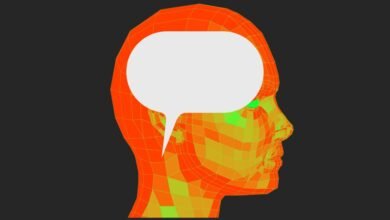GPT-5 Fails to Meet Expectations as Evidence Mounts

▼ Summary
– Power users found OpenAI’s new GPT-5 model unimpressive, criticizing its colder tone compared to the friendlier GPT-4o.
– OpenAI responded to feedback by making previous models available again and promising to make GPT-5 warmer and friendlier.
– The model’s performance fell short of expectations, failing to demonstrate significant strides toward human-level intelligence and struggling with basic tasks.
– Despite its lower cost, GPT-5 is outperformed by competitors like Anthropic’s Opus 4.1 in accuracy tests, though it remains more affordable.
– Industry experts and insiders express concerns about an AI bubble, with diminishing major advancements and growing disillusionment over hype versus reality.
The recent launch of OpenAI’s GPT-5 has left many of its most dedicated users underwhelmed, raising questions about the pace of genuine innovation in artificial intelligence. Early adopters who had grown accustomed to the warm and supportive tone of earlier models found GPT-5 to be noticeably colder and less engaging, prompting swift criticism and calls for a return to the more personable interactions of GPT-4o.
In response to user feedback, OpenAI quickly made previous model versions available again and publicly committed to adjusting GPT-5’s demeanor, acknowledging that its initial formality did not resonate with the community. This reaction highlights the significant pressure on the company as it pursues a monumental valuation, with internal and external observers questioning whether the latest iteration represents meaningful progress toward human-level intelligence.
Some pointed out that GPT-5 struggles with basic tasks, such as counting letters in simple words, a surprising shortcoming for a model years in the making. Rather than a revolutionary step forward, many perceive it as an incremental update, reinforcing concerns that the AI industry may be entering a phase of diminished returns after a period of intense hype.
OpenAI CEO Sam Altman recently acknowledged that investor enthusiasm around AI may have become overheated, though he maintained that his company remains insulated due to its market position. Industry experts are recalibrating expectations, moving away from apocalyptic predictions of superintelligence and toward a more measured view of AI’s near-term capabilities.
Entrepreneur David Saps observed that leading AI models are now clustering around similar performance levels rather than making isolated, dramatic leaps. Developers echoed this sentiment, noting that while GPT-5 is reliable and competent, it doesn’t break significant new ground. AI researcher Simon Willson described it as capable and occasionally impressive, but not a radical departure from existing technology.
One notable advantage of GPT-5 is its affordability. Testing showed that running standardized benchmarks cost just $30 with GPT-5, compared to $400 using Anthropic’s Opus 4.1. However, this cost efficiency comes with trade-offs in accuracy and performance, where competing models still hold an edge.
The gap between OpenAI’s ambitious pre-launch promises and GPT-5’s delivered performance has led to broader skepticism. Altman had previously suggested that the jump from GPT-4 to GPT-5 would mirror the advance from GPT-3 to GPT-4, a claim that now appears overstated. Some developers even remarked that GPT-5 feels like a model that should have been released a year ago, further underscoring the disconnect between expectation and reality.
As users and experts alike grapple with these results, the conversation is shifting from awe to scrutiny, with many wondering what the next real breakthrough will look like, and when it will truly arrive.
(Source: Futurism)





